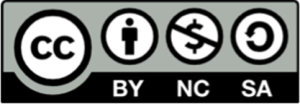7.1 The Marketing Environment: Demand and Supply
After reading this section, students should be able to …
- The types and potential sources of information about the marketing environment.
- How market information may be actualized for analysis in marketing planning.
A firm’s external marketing environment comprises demand, supply and other environments such as the political, economic, social, technological, environmental, and legal environments. In practice, economic indicators, demand, and supply are aggregated and analyzed with econometric research instruments. The information describing the external environment is critical to strategic marketing planning.
Demand and supply of company products are naturally very important factors in marketing planning.

7.1.1 Concept of Demand and Demand Drivers
In economics, demand is the quantity of goods or services customers are willing to buy at a certain price, in a certain market at a certain time. The definition of demand includes the quantities of a good or service that a household or a firm would be willing and financially able to purchase at various prices, holding other things constant (Maddala & Miller 1989). Note that the need or desire to buy does not constitute demand – both willingness and ability to buy must be present.
Demand is directly dependent upon price. Demand for a product that has many substitutes is said to be elastic, since the consumer can easily purchase a different product if price increases (e.g., commodity softwood lumber). On the other hand, demand is said to be inelastic if there are no close substitutes or if the cost is minimal in comparison to the consumer’s income. Inelastic demand allows greater pricing flexibility, since raising prices will have relatively small impacts on total demand.
Those factors having an impact on demand are called demand drivers. For example, key demand drivers for paper products in a certain market area include:
- Economic growth
- Population
- Number of households
- Growth of different GDP components
- Advertising trends
- Basis weight trends
- End-use and substitution trends
- Environmental issues (Jaakko 2000)
7.1.2 Demand Information in Marketing Planning
For marketing planning purposes, demand can be measured as follows:
- Future demand by end-uses
- Future demand in the medium term (1-3 years)
- Future demand in the long term (over 3 years)
- Future demand by customer groups
- Price prospects
- Future demand in the short term (under 1 year)
- Future demand by countries
Generally speaking, information concerning demand is very important in marketing planning. The order of importance is about the same in both industries except as to future demand by countries. In wood industries country bound information is considered more important.
7.1.3 Concept and Content of Supply
Supply is the quantity of goods or services producers are willing to sell at a certain price, in a certain market at a certain time. Like demand, supply is directly dependent upon the price that can be obtained in the marketplace. The natural dynamics of the marketplace result in an equilibrium price where supply roughly meets demand – buyers will drive prices higher if they are willing to buy more than is supplied, and will drive prices lower if they are willing to buy less than is available.
In practice, the supply situation is expected to change in the future when forest industry companies announce the construction of new mills or machines, re-builds of existing mills or machines, start-ups of a green-field mill, or shutdowns of old mills or machines.
7.1.4 Supply Information in Marketing Planning
The following list describes the order of importance of supply information according to the information specialists of the paper and paperboard industry:
- Future supply by product types (e.g. by paper grades)
- Future supply in the medium term (1-3 years)
- Future supply in the long term
- Future supply by countries or regions
According to results from the two Finnish studies (from 2000’s), supply information is important in marketing planning, and about equally important as demand information. As with demand, specific product-type supply information is considered most important. Contrary to the paper industry, the wood industry emphasizes long term supply and supply by countries or regions more than future supply in the medium term. The rankings of supply information reflect the nature of the markets. In more sophisticated and fragmented markets, it is more important to know the future changes in supply of various product types than the general development of supply. The time horizons, especially of the paper business, have shortened resulting in an emphasis on medium-term supply information.
7.1.5 Concept and Content of PESTEL factors
The other macro environment includes the economic, technological, legal, social and institutional environments. GDP and its development is an example of the economic environment. The technological environment includes technological norms, regulations, standards, etc. It may also include indicators of technological development, technological changes, and opportunities for innovation. Judicial regulation connected to a company’s operations is called the legal environment. Environmental consciousness and public opinion in society as well as pressure groups that influence company operations, are examples of the social environment. Trade policy, governmental agencies, etc., are examples of the institutional environment.
References:
-
Maddala & Miller 1989. Microeconomics, Theory and Applications. International Edition. 634 pp
-
Jaakko Pöyry Consulting Oyj. 2000. World paper markets up to 2005. Jaakko Pöyry Consulting Oyj. Report Brochure. 5 pp
Source:
Section 7.1 The Marketing Environment: Demand and Supply is edited and adapted from the chapter ‘Chapter 3: The Marketing Environment, an Information Approach’ in the textbook, ‘‘Strategic Marketing in the Global Forest Industries – Third Edition,’ authored by Eric Hansen & Heikki Juslin, 2018 – this book was licensed under a Creative Commons Attribution-NonCommercial 4.0 International License.


